 |
|||||||||||||||
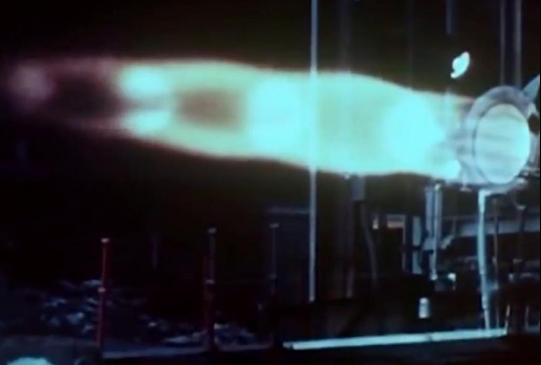 |
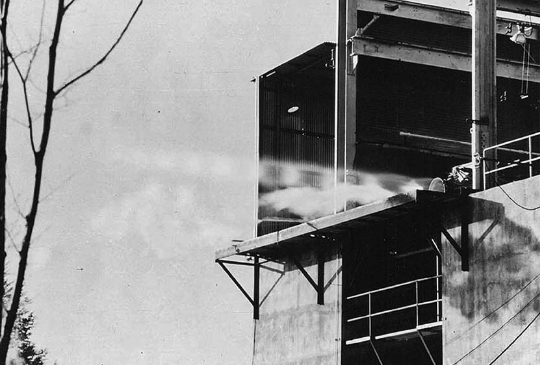 |
|||
The XLR-99 is fired on the test stand at Reaction Motors, Inc. (RMI) in New Jersey. Development of the new rocket motor fell behind schedule, necessitating the use of a double-stack of XLR-11 engines as interim power to start the X-15 flight program. In the end the LR-99 proved to be a mighty workhorse that propelled the X-15 to nearly Mach 7. Six months before X-15 rollout in October 1958, RMI was purchased by Thiokol Chemical. At that time it converted to Reaction Motors Division (RMD), a division of Thiokol. NASA Headquarters (left) and Thiokol (right) |
||
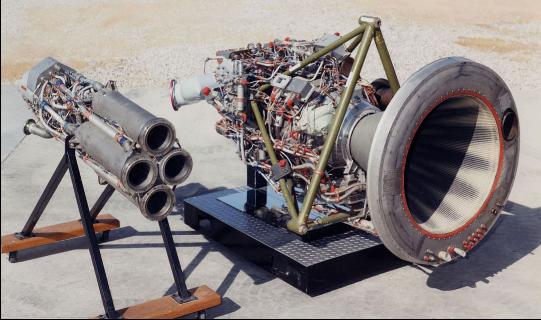 |
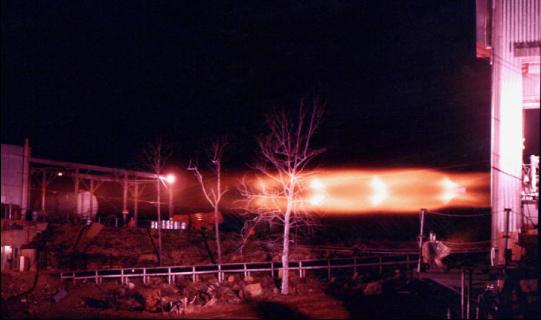 |
|||
Comparison of the LR-11 and LR-99 rocket engines used in the X-15 program. Armstrong Flight Research Center |
XLR99-RM-1 rocket engine test firing at Reaction Motors. The power is evident. Wade Martin collection |
|||
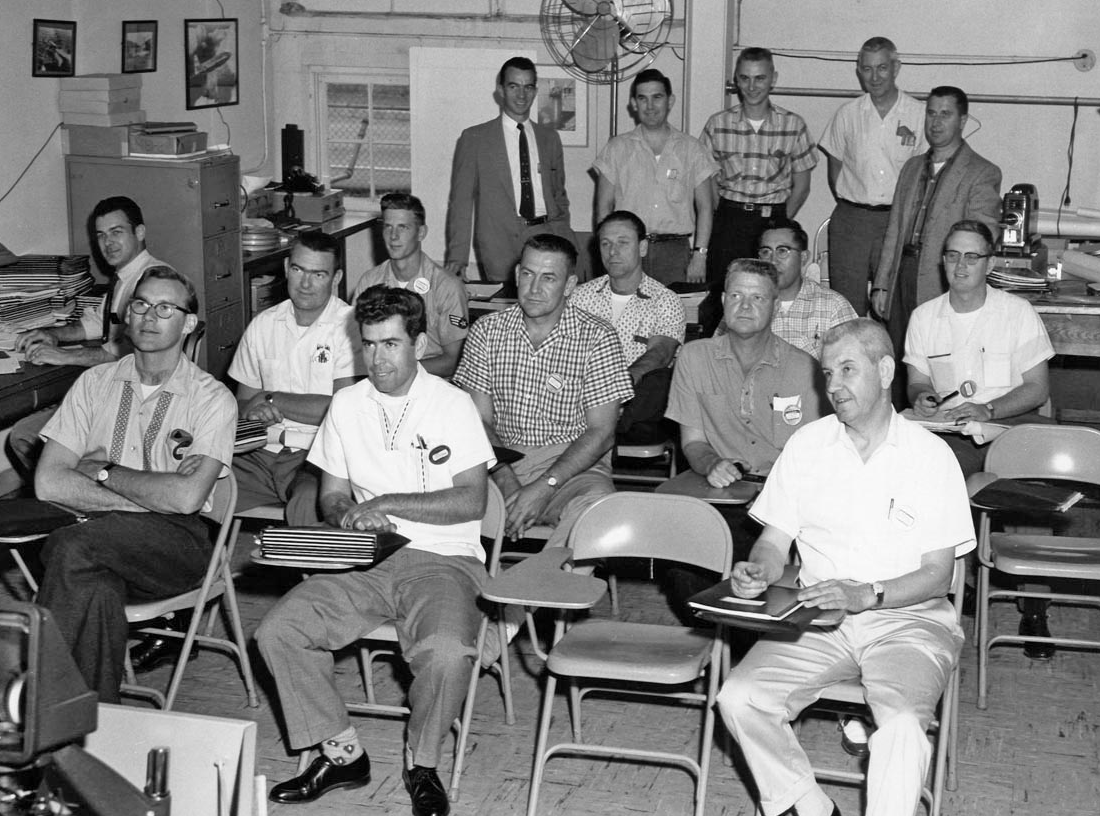 |
||
The men responsible for the rocket engine during the X-15 flight test program at Edwards received training at a class given by Reaction Motors in Denville, New Jesrey. Wade Martin collection |
||
— Reaction Motors XLR11-RM-13 Rocket Engine — |
||
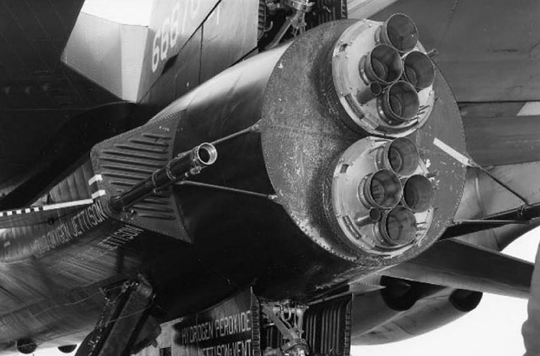 |
||||
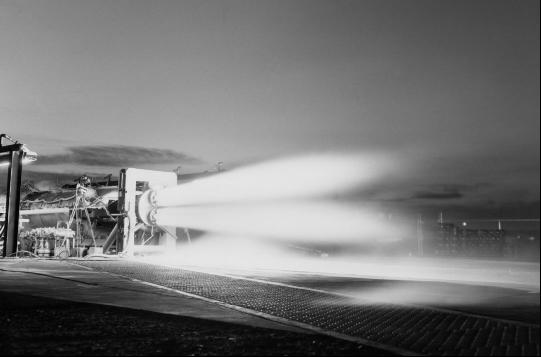 |
||||
LR-11 rocket engine run at sunrise at the Propulsion System Test Stand. The twin-pack LR-11s provided 16,000 pounds of thrust for the X-15 rocket plane. TD Barnes collection |
Twin LR-11 rocket engines installed on the X-15. Each individual chamber produced 2,000 pounds of thrust, which was an increase of 500 pounds from an earlier version. Armstrong Flight Research Center |
|||
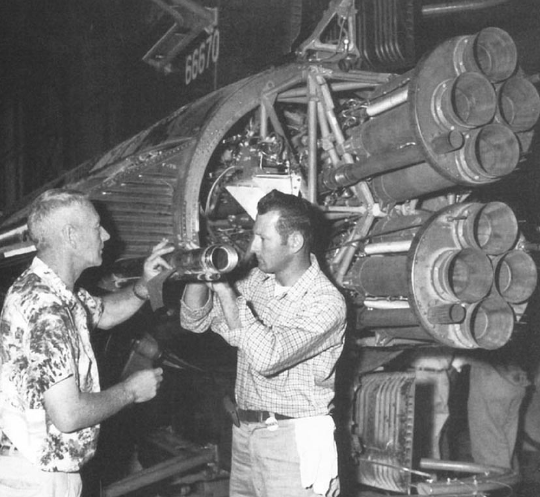 |
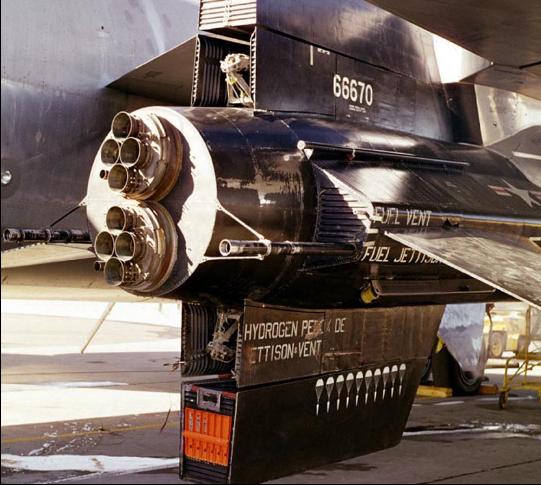 |
||||
The X-15 with the double-stack LR-11s are loaded onto the B-52 pylon, ready for flight. Note the lower ventral and the stencils on the jettisonable lower half, with markings showing it has been jettisoned and recovered safely 10 times. Armstrong Flight Research Center |
|||||
LR-11s installed on X-15 no. 1 with the tail cone cowling removed on 1 Jun. 1960. Peter Sterk and Ed Nice are working on the liquid oxygen jettison tube. Armstrong Flight Research Center |
|||||
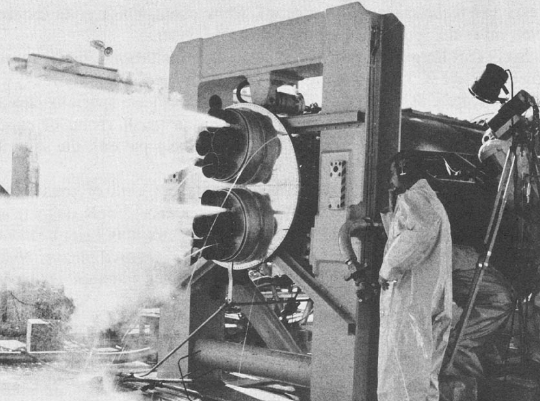 |
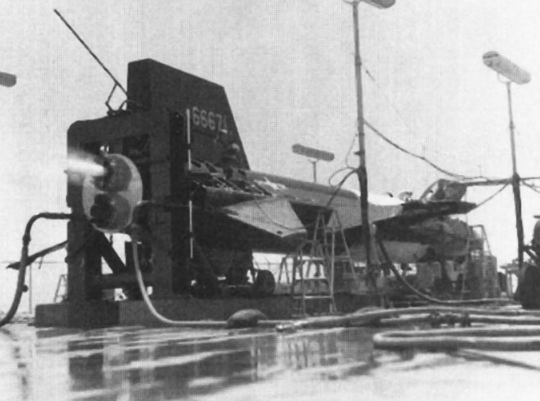 |
|||
Jettison tests are performed with a technician standing by prior to the engine run. Armstrong Flight Research Center |
Ignition of the first chamber on the upper LR-11 engine. Armstrong Flight Research Center |
|||
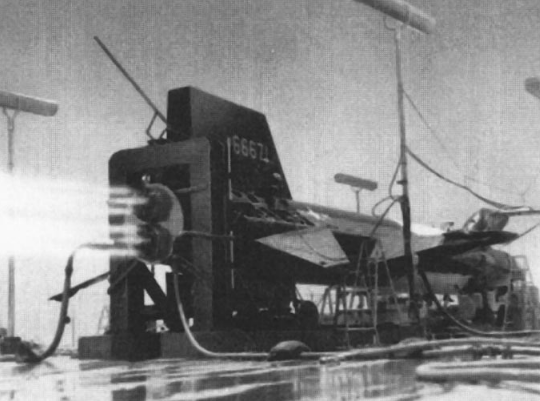 |
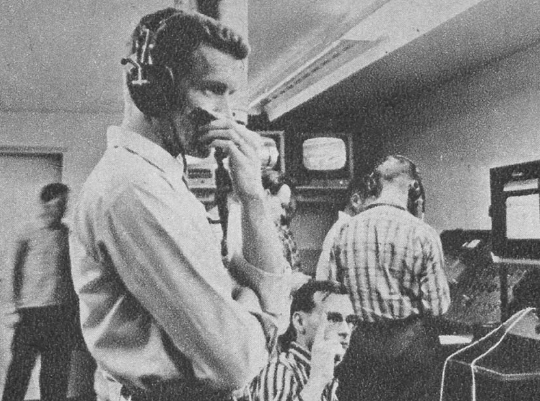 |
|||
All eight chambers running on X-15 no. 2. Armstrong Flight Research Center |
Tom Maney and Harry Pleshek in the blockhouse monitoring a static engine firing. Armstrong Flight Research Center |
|||
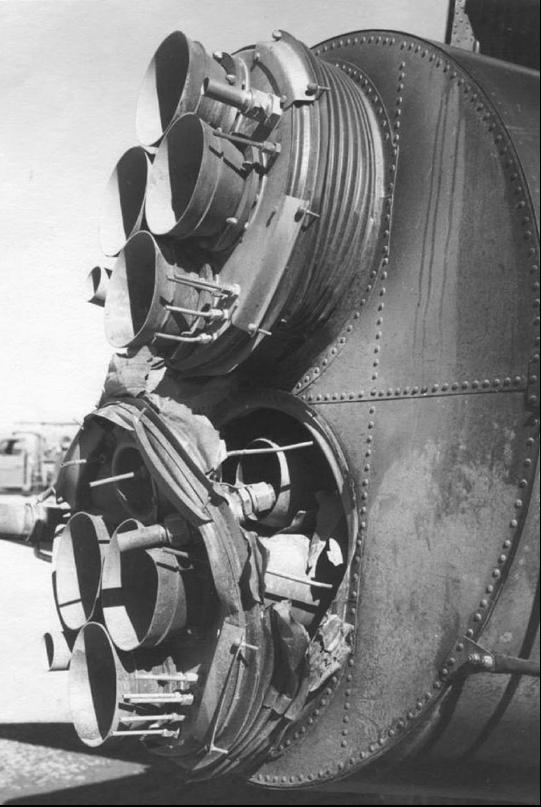 |
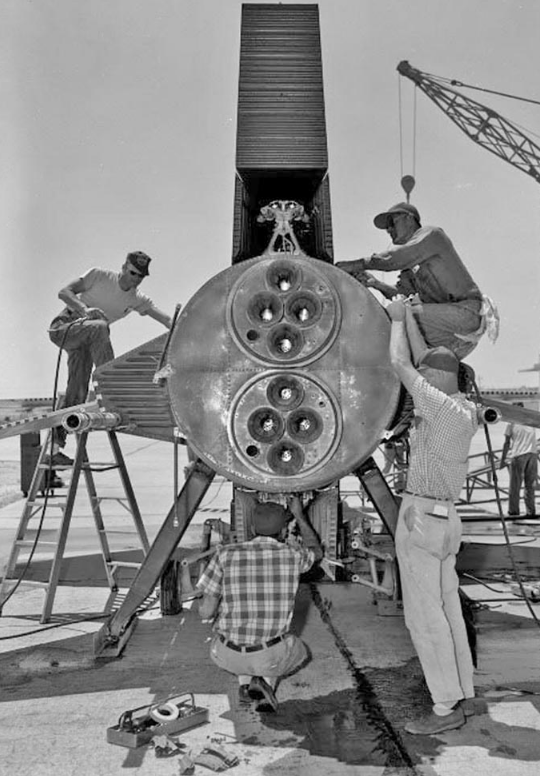 |
||||
Joe Walker flew mission 1-7-12 on 12 May 1960. During flight he intentionally shut down 3 of the LR-11 chambers, and the other 5 chambers shut down on their own at the same time. Even with that incident Joe reached 2,111 mph, which was the first successful aircraft flight past Mach 3 (Mel Apt died in his Mach 3 flight of the X-2 on 27 Sep. 1956). In this photo (counterclockwise), mechanics Ed Nice, Charlie Russell, Frank McDonald, and Ramon Jimenez are removing engine inspection panels following Joe's flight. Armstrong Flight Research Center |
|||||
Soon after launch of the third powered flight of the X-15 program on 5 Nov. 1959, a fire started in the upper LR-11. Scott Crossfield shut down and headed for Rosamond Dry Lake, where he performed the first X-15 emergency landing. Due to the fire, the jettison lines didn't work, causing an overweight landing, breaking the back of X-15 no. 2. Although dramatic in appearance, the damage was repaired quickly by NAA. North American Aviation |
|||||
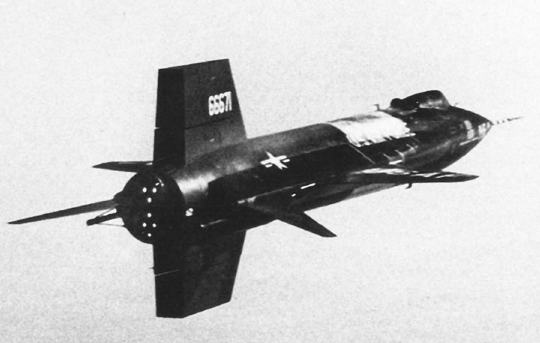 |
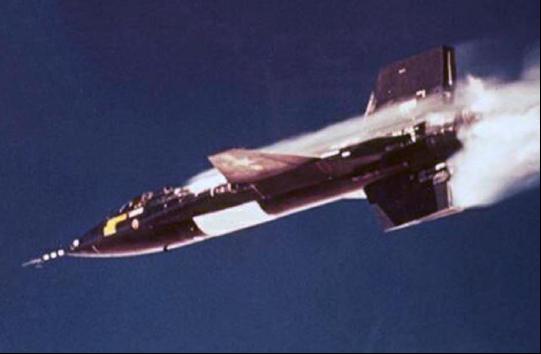 |
|||||
Crossfield flew X-15 no. 2 on 17 Feb. 1960 with mission 2-5-12. As seen in this image, the upper chamber of the upper LR-11 shut down, so only 7 chambers are lit. North American Aviation |
||||||
X-15 no. 1 flies with all 8 chambers of the LR-11 firing perfectly. North American Aviation |
||||||
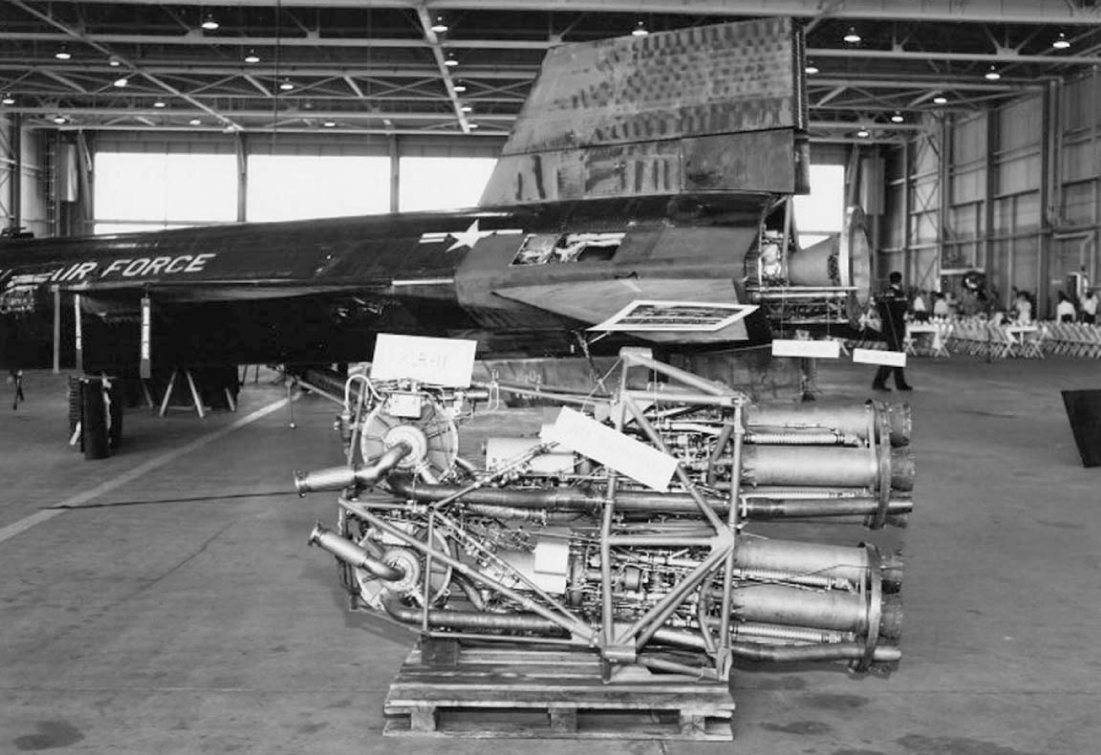 |
||
Transitioning from the LR-11 to the LR-99. The XLR11-RM-13 8-chambered double stack sitting on a pallet next to an X-15 in the NASA hangar at the Flight Research Center. It appears to have just been replaced by an XLR-99-RM-1, which can be seen with the rocket engine cowling removed at the rear of the X-15. Also note that an event is about to commence, since there are numerous chairs set up at the right center of the photo, along with signage around both rocket engines. North American Aviation |
||
— Reaction Motors XLR99-RM-1 Rocket Engine — |
||
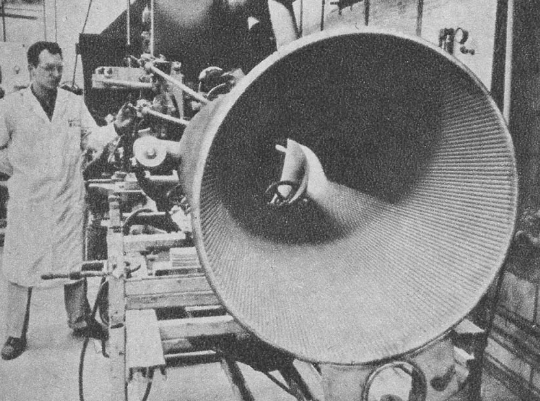 |
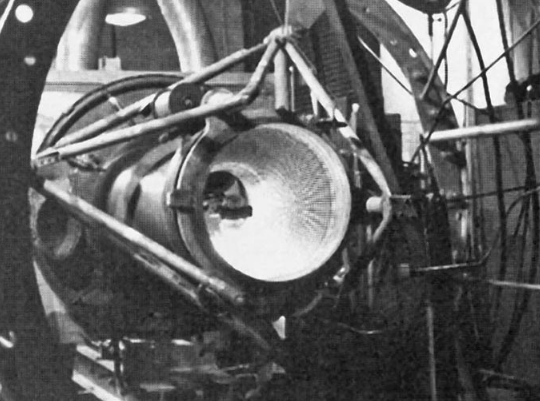 |
|||
Early tests of the nozzle for the LR-99. Thiokol |
||
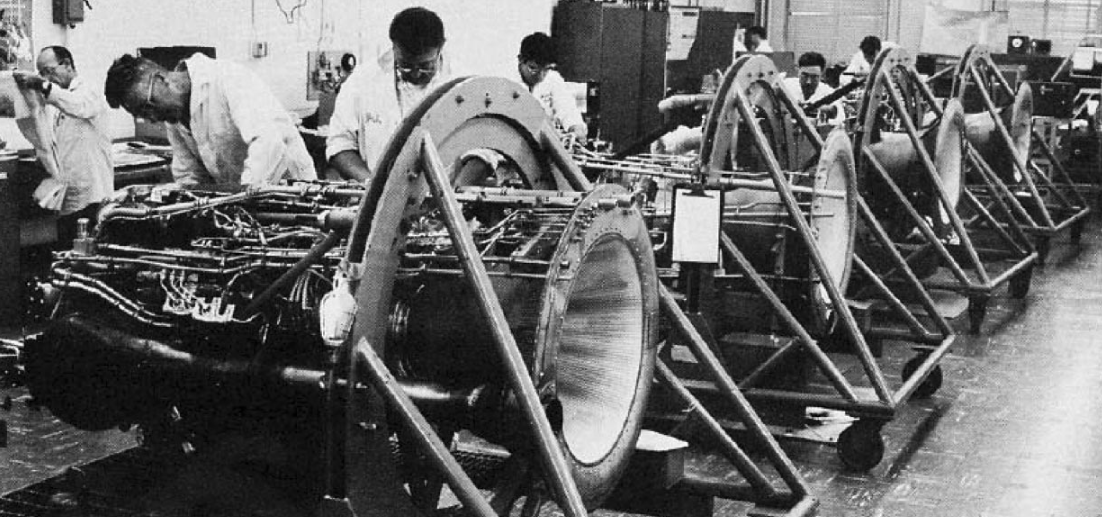 |
||
Once perfected, the XLR99-RM-1 rocket engine was manufactured on an assembly line at the Reaction Motors plant in Denville, New Jersey. Thiokol |
||
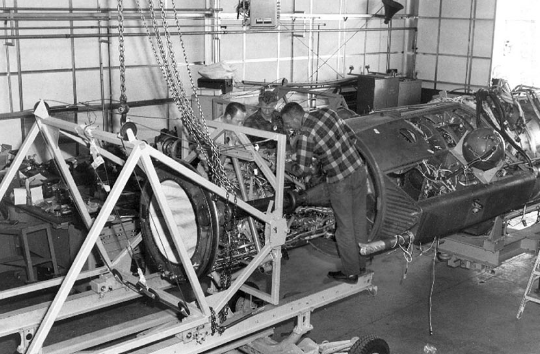 |
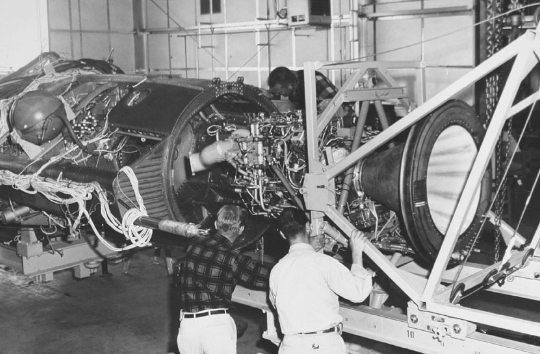 |
|||
(above and below) Installation and checkout of the XLR99-RM-1 rocket engine on 25 Apr. 1960. Thiokol |
||
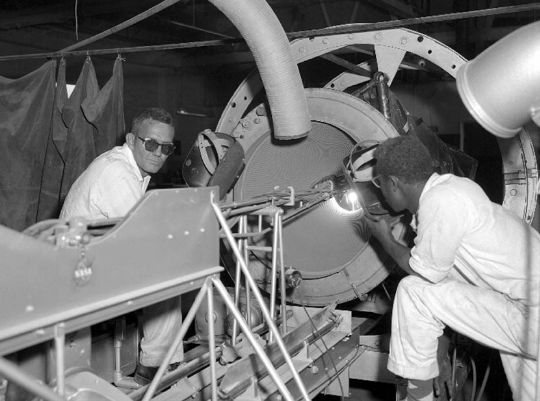 |
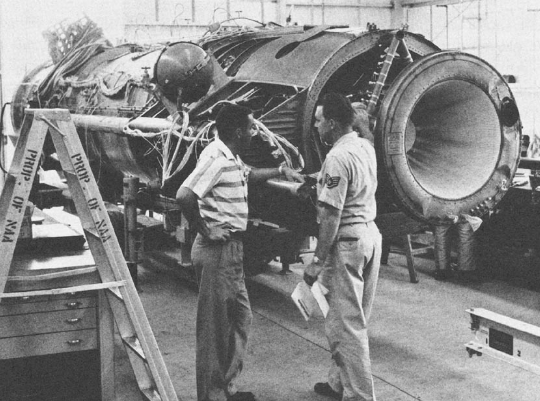 |
|||
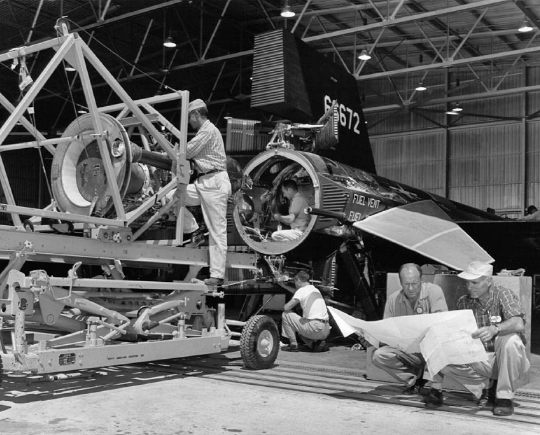 |
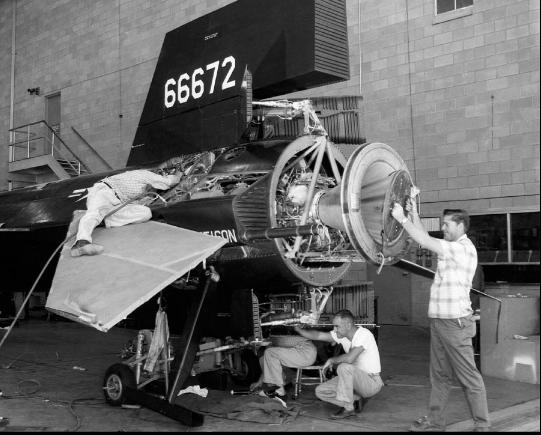 |
|||
Installation of the first XLR99-RM-1 rocket engine in April 1960 on X-15 no. 3. North American Aviation |
||
— 8 June 1960 — |
||
On 8 Jun. 1960 X-15 no. 3 was strapped into the holding fixture for an LR-99 engine run. An ammonia line pressure relief valve failed, causing a massive explosion that literally tore the X-15 in half. Crossfield, in the cockpit was thrown 25 feet forward, but otherwise unharmed. The rear third of the aircraft was completely destroyed, but was re-built using program spares. This series of photos shows the sequence of events, and the aftermath of that fateful day in X-15 history. |
||
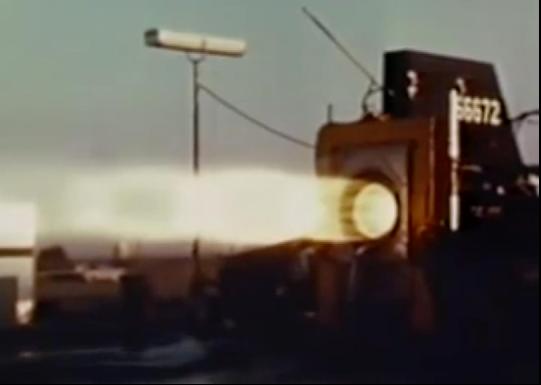 |
 |
|||
Scott Crossfield ran the LR-99 to full power (left above), then experienced a shutdown (right above). At the moment he reset the system in order to try a re-start on the engine, the line ruptured, causing the explosion (below). NASA Headquarters |
||
 |
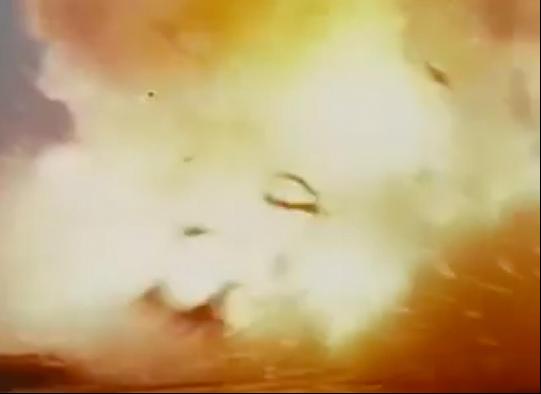 |
|||
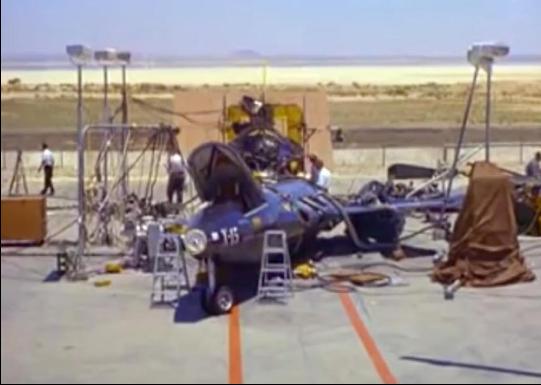 |
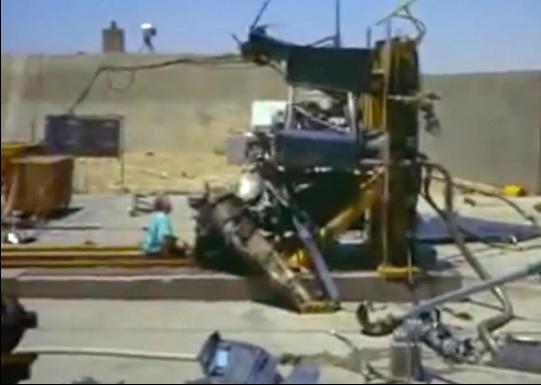 |
|||
(above and below) Assesing the damage in the aftermath of the explosion shows the extent of the destruction caused to X-15 no. 3. NASA Headquarters |
||
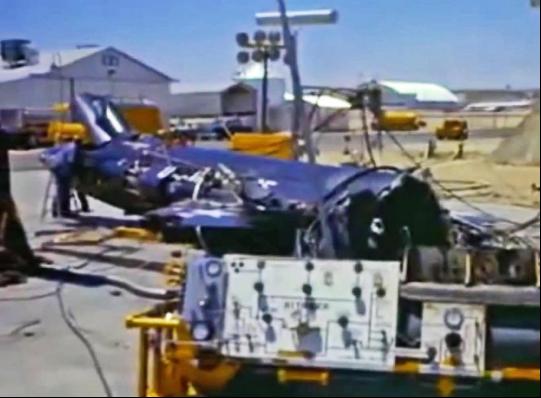 |
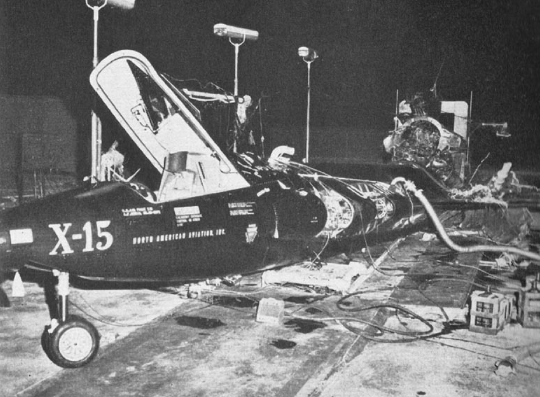 |
|||
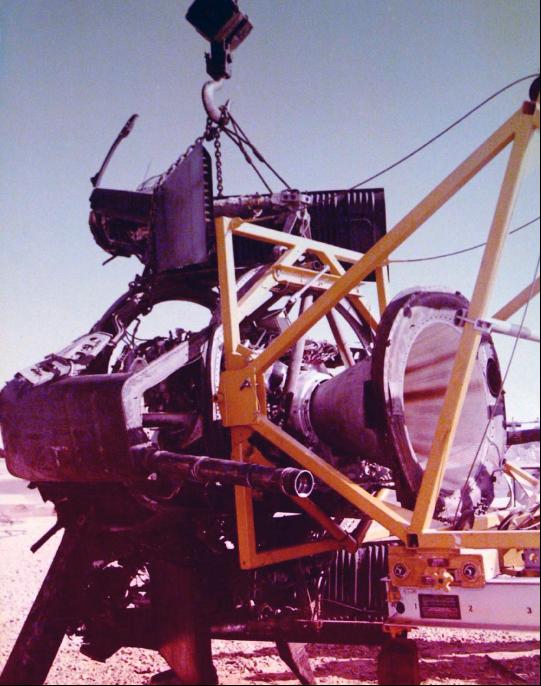 |
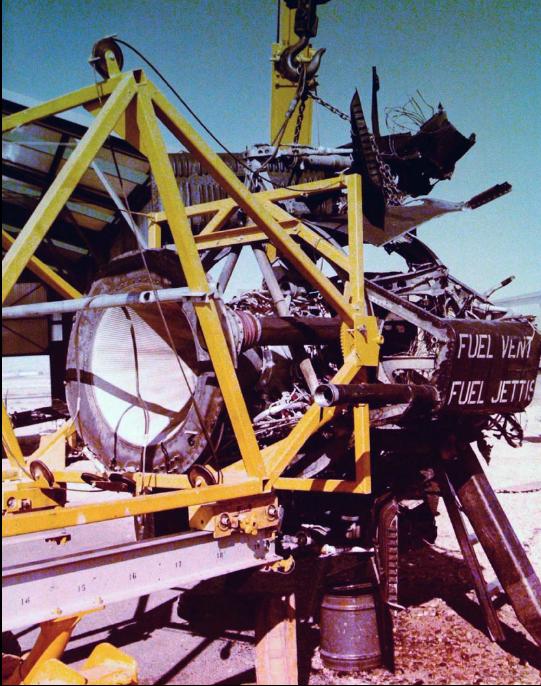 |
|||
Two views of the mangled mess that used to be the aft end of X-15 no. 3 after the fuel line rupture on 8 Jun. 1960. It has been set up here to examine the wreckage and discover the cause of the mishap. Armstrong Flight Research Center |
||
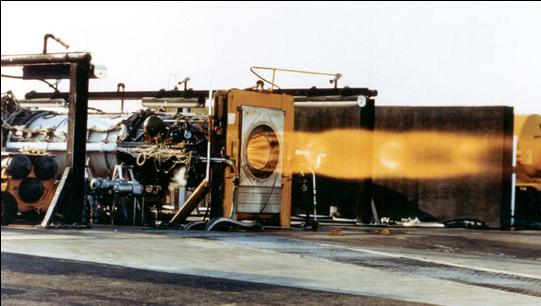 |
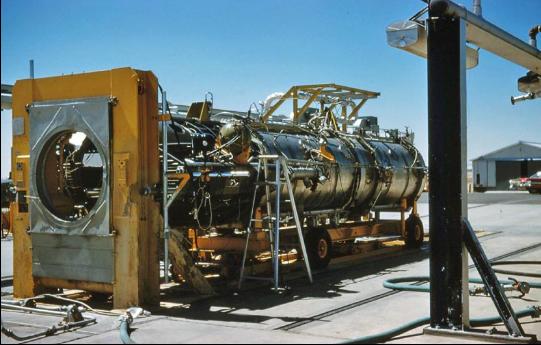 |
|||
LR-99 rocket engine test at one of two Propulsion System Test Stands (PSTS) using a skinless X-15. This is basically an anhydrous ammonia fuel tank, an oxydizer tank, and associated plumbing. The two stands, along with the blockhouse and enclosure were known as the Propulsion System Test Facility (PSTF). Dave Stoddard collection |
||||
Showing the skinless X-15 mated to the test rig, with no rocket engine installed. Armstrong Flight Research Center |
||||
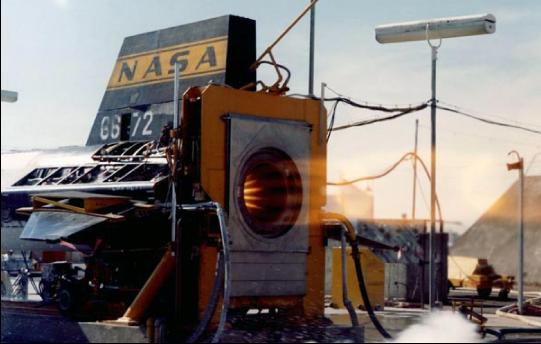 |
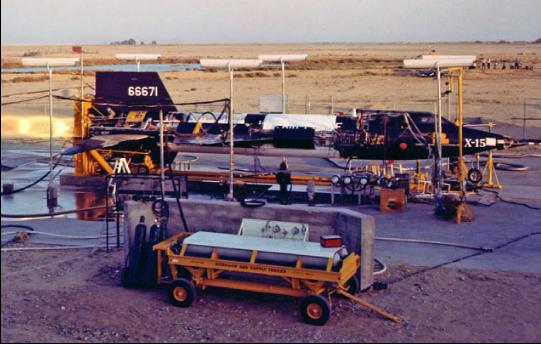 |
|||
The business end of X-15 no. 3 with the 57,000 lb thrust LR-99 rocket engine firing. Armstrong Flight Research Center |
Test firing X-15 no. 2 prior to the first LR-99 flight by Crossfield on 15 Nov. 1960. North American Aviation |
|||
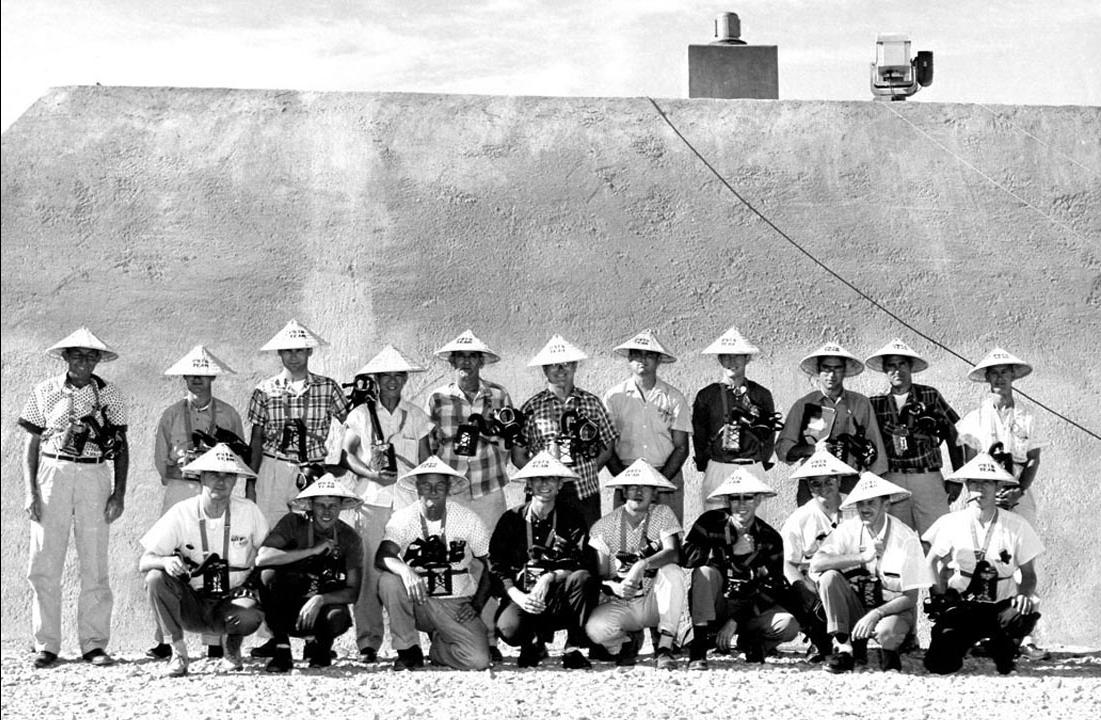 |
||
North American Aviation rocket personnel at PSTF blockhouse wearing Chinese-style hats to keep off the desert sun, along with gas masks to protect against toxic fumes. A few of the personnel here have been identified: Standing (far L) Dick Post of NAA, (2nd from L) Jerry Wilson from Civil Service, (6th from L) Vic Sondfor of NAA, (3rd from R) Jim Wilson of NAA, (2nd from R) Dave Stoddard of NAA (later NASA), (far R) Glenn Ford of NAA. Kneeling (3rd from L) Mr. McClarin from Civil Service, (4th from R) Duke Silver of NAA, (3rd from R) Bill Wood of NAA, and (2nd from R) Cap Halsy of NAA. Dave Stoddard collection |
||
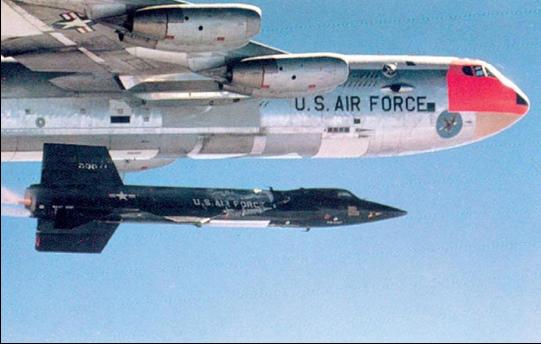 |
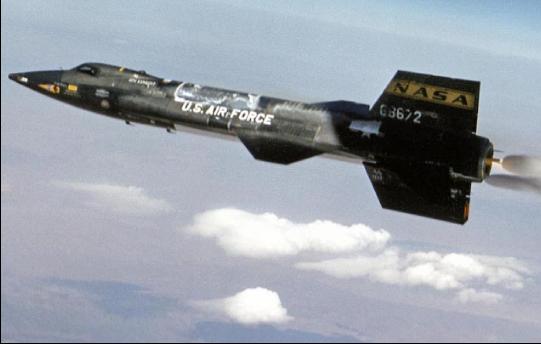 |
|||
Robert White, in X-15 no. 2, drops away from B-52 no. 008 on 9 Nov. 1962. The LR-99 will propel the aircraft and pilot on the first ever flight above Mach 6. Armstrong Flight Research Center |
X-15 no. 3 ignites its engine and moves out of the shadow of the mothership's wing, at the start of another X-15 hypersonic research flight, thanks to the power of the LR-99. Armstrong Flight Research Center |
|||